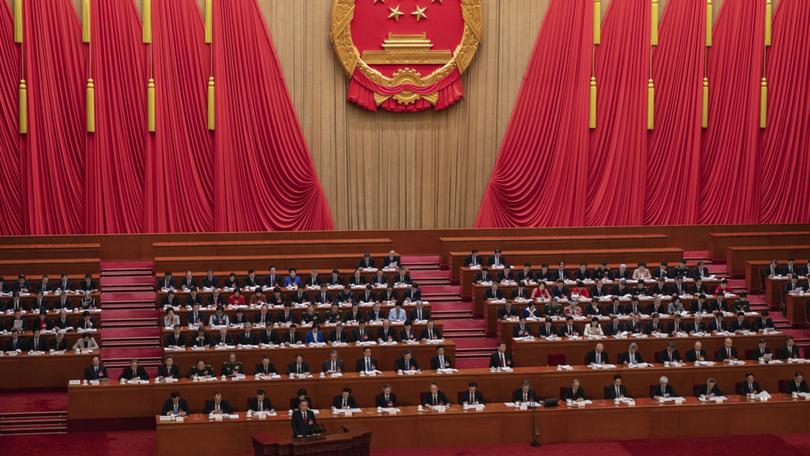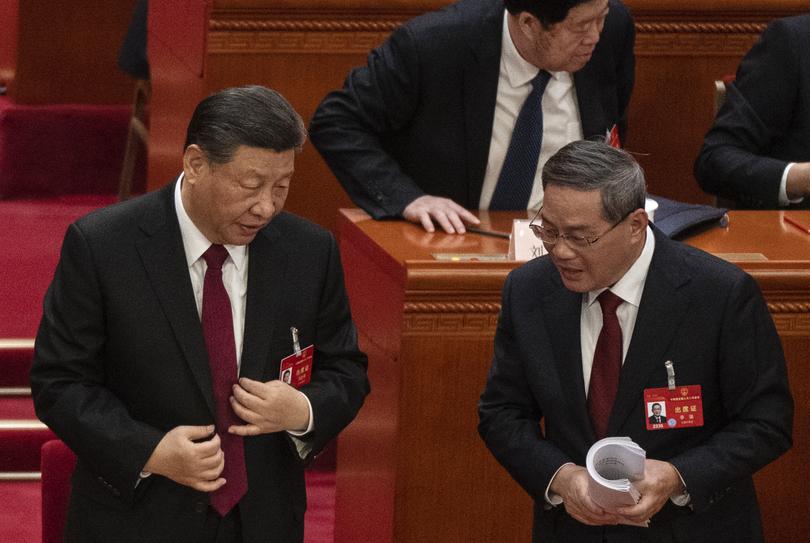What buzzwords from China’s key political meeting reveal, from ‘AI Plus’ to ’New Three’

As lawmakers and advisers meet in Beijing this week for the nation’s biggest political gathering of the year, the Chinese Communist Party’s official People’s Daily newspaper released a list of the event’s buzzwords.
Tracking slogans and phrases from government and party documents has become an important way to gain insight into Chinese policymaking, especially as the country has increasingly restricted access to information.
This year, Li Qiang will be the first premier in three decades to not hold a press briefing at the National People’s Congress, removing a rare platform to engage with one of the most senior officials in the country.
Sign up to The Nightly's newsletters.
Get the first look at the digital newspaper, curated daily stories and breaking headlines delivered to your inbox.
By continuing you agree to our Terms and Privacy Policy.Here are the key terms that can help better understand China’s priorities for the upcoming year.
New Three
Premier Li noted during his work report that exports of the “new three” growth drivers of electric vehicles, batteries and solar products grew by 30 per cent last year.
While the focus on the three sectors helps in the de-carbonisation push, they are far from enough to replace traditional economic drivers such as the property sector.
China’s push into high-end manufacturing is also already raising tensions with trade partners. The term hearkens back to the “old three” pillars of Chinese manufacturing, including household appliances, furniture and clothing.

Ultra-long special central government bonds
Li announced the country’s plan to issue 1 trillion yuan ($212b) of ultra-long special central government bonds as authorities ramp up fiscal stimulus. It’s only the fourth such sale in the past 26 years, with the most recent one in 2020 when authorities issued the same amount of such bonds to pay for pandemic response measures.
The amount was in line with expectations, but analysts say China will need a lot more if it is to meet its aggressive growth target of around 5 per cent this year.
Consistency of macro policy orientation
The phrase gained prominence during a Politburo meeting in December and then featured again at the Central Economic Work Conference later that month.
The government has called for the stronger co-ordination of fiscal, monetary, employment, industrial and regional policies. Investors have complained about policy whiplash which has led to stock market swings, such as when harsh gaming curbs sparked a multi-billion dollar rout late last year.
New productive forces
The term was introduced by Chinese leader Xi Jinping in September during an inspection trip to the country’s north-east.
The official Xinhua News Agency said it means “advanced productivity freed from traditional economic growth models”, featuring new growth drivers that are “high technology, high efficiency and high quality”.
State media has said these growth drivers include everything from the tourism industry to China’s “new three”.
Leaders including Xi have recently stressed that traditional industries can also become “productive forces”, perhaps reflecting concerns about whether an overemphasis on new sectors could lead to a contraction in older ones.
Worry-free consumption
A government drive to get consumers spending by focusing on issues with food safety, refund policies and disputes between buyers and sellers has been under way since at least the summer of last year.
However, economists say that measures such as “worry-free” buying and trade-in programs highlighted in the government work report fall far short of the types of stimulus and confidence-boosting measures that will be needed to get consumers spending again.
There are already plenty of signs of consumption downgrading due to the persistent property slump and slowing economy.
Future industries
Li pledged to “formulate development plans for the industries of the future”, name-checking new fields such as quantum technology and life sciences. He also pledged to strengthen co-ordination and planning to prevent overcapacity and redundant development.
The central government said it would increase spending on scientific and technology research by 10 per cent in 2024, and pledged to harness the entire nation’s resources to drive tech advances.
Invest in China
Li said China would increase efforts to attract foreign investment and build the “Invest in China” brand. Foreign direct investment slumped to a 30-year low in 2023 on concerns over China’s long-term growth prospects and as geopolitical tensions rise.
A widening yield gap with the US also meant investors moved money offshore in search of higher returns. Though the government has vowed to improve the business environment and released a list of 24 points last year to achieve these ends, it may be too little for executives who believe the risk-reward trade-off of doing business in the country has fundamentally changed.
Nationally unified computational system
Chinese officials have said they see computing power playing the same key infrastructure role that waterways and electricity grids have in the past, and set goals last year to build of a national computing network.
As part of an effort to make a more digital economy, China already has an “East Data West Computing” plan, which involves building huge data centers in poorer western provinces to hold data generated by internet companies based in the east.
The unified system would be able to better allocate computational power and storage, according to state media.
AI Plus initiative
Li announced China would launch the AI Plus Initiative this year. While details are scarce, AI is a core area of competition between the US and China.
State media cited an academic at a government-linked think tank as saying that the initiative would “promote the in-depth integration of AI and the real economy by deepening the research and application of AI technology.”
Bloomberg
Originally published as What buzzwords from China’s key political meeting reveal, from ’AI Plus’ to ’New Three’
